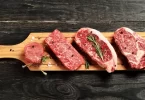A modern mobile kitchen lets entrepreneurs meet customers where demand peaks. Yet success hinges on selecting a custom food trailer engineered for workflow, branding, and local codes. The specialists at golden state trailers share the roadmap below so you can launch faster and operate with confidence.
Contents
1 Define Your Concept
List every menu item and service style first. A taco stand needs griddles and cold-prep wells; a smoothie bar prioritises blenders, under-counter refrigeration and merchandising windows. This clarity decides whether you need a compact cart or a full mobile kitchen trailer, the fuel type and daily power draw. Sketch a typical service day—from morning loading to evening clean-down—and let that timeline dictate storage capacity and water-tank size.
2 Match Size and Layout
Square footage costs money and influences speed. Map a “prep → cook → serve” line that avoids cross-traffic. Reputable food trailer builders near me use CAD to position sinks, grills and pass-throughs so two cooks never collide. Smart food trailer design also reserves headroom for future add-ons such as a second fridge or draft system.
3 Select Purpose-Built Equipment
Durable commercial food trailer equipment—NSF stainless prep tables, commercial hoods, low-draw LED lighting—reduces downtime. Ask concession trailer manufacturers to provide proof that generators, gas lines and breakers can power every appliance at full load. Early custom trailer consultation prevents surprise up-charges later.
4 Plan for Compliance
Health officers want restaurants on wheels to mirror those on land. Insist that the build exceeds food trailer compliance standards: three-compartment sinks, hand-wash stations, shatter-proof lighting and automatic fire suppression. Document all trailer licensing and regulations for each county you will visit, and schedule pre-delivery trailer inspection requirements so no launch date slips. Keeping copies of certificates on board speeds festival check-ins and surprise audits.
5 Balance Cost and Financing
A bargain shell may save a few thousand now but burn profits later through repairs and lost sales. Premium insulation, rust-proof framing and food-safe sealants add longevity. Leading builders offer staged payments, SBA-friendly leases and transparency on parts sourcing so you grasp total cost of ownership. Build sheets that itemise every hinge and gasket help when budgeting for future maintenance.
6 Choose a Proven Builder
Search “food trailer builders” or “food truck manufacturer” and vet portfolios for variety and craftsmanship. Talk to prior clients about deadlines, warranty claims and post-sale support. With Golden State Trailers you receive a build tracker, schematics and delivery by transport. Their engineers advise on axle load, tongue weight and turning radius so your existing tow vehicle is a safe match.
7 Factor in Mobility and Storage
If your calendar is packed with farmers’ markets and late-night festivals, mobility matters. Lightweight alloys, electric brakes and balanced weight distribution make towing less stressful. A fold-down awning and detachable signage simplify winter storage, while lockable service windows deter theft when the unit sits overnight.
8 Maximise Exterior Branding
Your trailer is also a billboard. Full-wrap vinyl graphics, rooftop LED beacons and QR-coded menus convert foot traffic into followers. Consistent colours across umbrellas, staff aprons and the trailer skin reinforce brand recall and encourage social-media shares that act as free advertising.
Conclusion
Great recipes deserve a platform engineered for safety, speed and showmanship. Define your concept, design for flow, demand certified components and partner with experts who stand behind every weld. When you roll out in a trailer from Golden State Trailers, you secure not just a kitchen but a competitive edge that keeps diners lining up wherever the road takes you.







